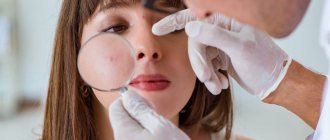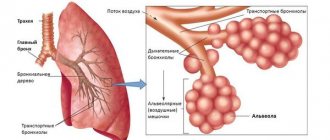Taking blood from a vein for analysis is one of the most popular and informative diagnostic methods in medicine. However, the results of such tests remain relevant for doctors only for a certain time, so during the next visit to the doctor, the patient may be scheduled for a blood draw again. AiF.ru told about how often you can donate blood from a vein therapist Irina Yartseva.
According to the doctor, there are no restrictions on the frequency of taking blood from a vein and conducting the corresponding analysis. You can and should donate blood as often as doctors require, in accordance with their direction.
“When blood is drawn, the volume is not the same as when it is transfused. They can take a maximum of 50 ml at a time. Nothing will happen to the person. The main thing is that all sterility conditions are observed so that infection is minimal. It should be carried out by specialists from a normal medical institution,” says the expert.
Can I drink water before taking a blood test? More details
Are there any benefits to donating blood?
Many researchers believe that regular small blood losses improve the functioning of the immune system because they stimulate blood volume replenishment.
The main thing about donation
The opportunity to become a donor is a merit of your healthy lifestyle. Find out why regular blood donation is so important. Detailed information about donation can be obtained on the Russian Blood Service portal yadonor.ru or by calling the Hotline: 8 800 333 333 0.
Within a month after donating blood, new red blood cells are actively produced, improving the supply of oxygen to all organs.
If you sneezed and you are unable to get a coronavirus test...
If you suspect you have signs of COVID-19, you definitely shouldn’t be scared! Before you run to get tested for coronavirus, you can do a preliminary laboratory diagnosis and see the results within 24 hours by email.
What tests can be taken?
[02-029] Clinical blood test: general analysis, leukocyte formula, ESR
Cost 410 rub. (without blood sampling)
A clinical blood test is a fairly serious study that allows you to find out whether you have anemia, suspect or exclude oncology, etc. We can say that the analysis will demonstrate the main indicators of your health.
Blood always reacts to infection. Depending on the indicators, it can be determined whether a bacterial or viral infection is occurring. In addition, a clinical blood test will show the state of your immunity.
Features: be sure to take the test on an empty stomach (do not eat for 8 hours before the test), because the number of leukocytes may increase after eating. In this case, there may be difficulties with diagnosis.
Let's look at the results:
For bacterial infection
- Increased: leukocytes, band leukocytes, neutrophils, ESR;
- Reduced: lymphocytes.
For a viral infection
- Increased: lymphocytes, monocytes;
- Decreased: neutrophils;
- Leukocytes: normal or slightly below normal;
- ESR: normal or slightly increased.
Important! However, these are just patterns. There are widely known cases where the blood reacts to an infection in a completely different way from the usual. In this regard, anyone who does not have a medical education can come to erroneous conclusions. This means that the interpretation of research results and making the correct diagnosis should be carried out exclusively by a doctor.
It is best to show the results to a therapist who will develop treatment tactics.
What to do, if…
Are you concerned about advanced CBC readings? You just want to know if you should worry about COVID-19, if you have a viral infection, etc.
In this case, you can even save money and get tested >>
[02-025] — Leukocyte formula
Cost 210 rub. (without blood sampling)
Features: Same as clinical analysis. Be sure to take the test on an empty stomach (do not eat 2-3 hours before the test) to get the correct number of leukocytes.
There are five types of leukocytes (lymphocytes, neutrophils, monocytes, eosinophils, basophils), each of them performs a specific function. “Relationships” between leukocytes can show both inflammatory processes and an allergic reaction.
The insidious COVID-19 can be suspected by an uncharacteristically low level of leukocytes! The blood of an adult contains an average of 4-9x10 9 leukocytes/l. Exceeding or decreasing standard indicators is a serious cause for alarm.
Important! You need to read the leukocyte formula very carefully and there is still no guarantee that you will get a definite answer. The interpretation of research results and making the correct diagnosis should be carried out exclusively by a doctor.
Don't forget to show the results to your therapist!
You can donate blood (and other biomaterials) for all tests offered by the Helix laboratory service at Medinsky every day:
- from 7.30 - Mon-Fri
- from 8.00 - Sat
- from 9.00 - Sun
We recommend that on the eve of the test you clarify the rules for preparing for laboratory tests in the unified information desk of the Helix Laboratory Service by phone. or from the administrators of the Medical Center at tel. 224-20-56, 286-20-56.
How often can you donate blood?
Whole blood can be donated no more than five times a year. There must be at least 60 days between two visits to the transfusion station. After all, it is important not only the amount of blood you donate, but also the state of your health
. After donating platelets or plasma, you can become a donor again within two weeks. But at the same time, you cannot donate plasma more than 12 times a year, because along with it the body loses important proteins, minerals and other useful substances, the restoration of which takes time.
Can a vein be damaged when blood is taken frequently for analysis?
Yartseva notes that in outpatient practice it is difficult to imagine cases when a patient’s blood is taken from a vein every day. Usually enough time passes between tests for the puncture in the vein to heal. “They always try to take blood from different hands if they have recently had a test done. In this case, it is better to warn the nurse in advance,” the doctor advises.
If a person is in a hospital and needs daily blood sampling from a vein to determine the level of any substances, a catheter is installed. But, according to Yartseva, this is usually required in rare cases when the patient has a serious illness.
Who should not be a donor?
There is a list of diseases for which you cannot donate blood, since it may be unsafe for the person to whom the transfusion will be given. First of all, these are almost all infectious diseases
, including HIV, syphilis, all types of hepatitis and tuberculosis.
You cannot donate blood if you have parasites
- echinococcus, toxoplasma and other “uninvited guests”.
Those who have malignant tumors, blood diseases, skin diseases, diseases of the nervous and cardiovascular systems, asthma, obstructive bronchitis and chronic obstructive pulmonary disease, some types of gastritis and ulcers, liver diseases and many other diseases, complete list, do not donate blood
which will be announced to you at blood transfusion stations. In addition, you will not be able to become a donor if you abuse alcohol or other psychoactive substances.
Before the donation procedure:
- Do not come to the blood service facility if you feel unwell (chills, dizziness, headache, weakness).
- Do not smoke an hour before donation.
- Do not drink alcohol 48 hours before donation.
- Two days before donation, avoid physical activity, incl. playing sports.
- Three days before donation, stop taking analgesics and aspirin, as well as medications containing them (these substances impair blood clotting).
- On the eve and on the day of blood donation, it is prohibited to consume fatty, fried, spicy and smoked foods, sausages, as well as meat, fish and dairy products, poultry, eggs and butter (including vegetable oil), chocolate, nuts and dates, avocados, beets, bananas and citrus fruits, sweet carbonated drinks, incl. energy.
- Be sure to get enough sleep and eat a light breakfast (sweet tea with jam, juices, fruit drinks, compotes, mineral water, bread, crackers, dried cereals, boiled cereals, pasta in water without oil, vegetables and fruits, EXCEPT avocados, beets, tomatoes, bananas and citrus fruits ). There is no need to donate blood on an empty stomach!
- When examined by a doctor before donation, answer his questions frankly and do not hide information about medications taken and past diseases.
What contraindications to donation are temporary?
People who have visited subtropical countries where malaria is common will not be donors
for three years for a year
after the birth of a child, tattooing, piercing, contact with people with hepatitis B and C, or vaccination against these diseases.
People cannot donate
for six months And also those who went on a business trip or traveled abroad for more than two months. a month
after influenza and ARVI, treatment of inflammatory processes or vaccination with live vaccines.
Blood can be donated ten days
after tooth extraction,
five days
after the end of menstruation.
After donation:
- Sit quietly in the donor lounge for 10-15 minutes.
- If you feel dizzy, contact your medical staff. The easiest way to help yourself is to lie down and raise your legs above your head, or sit down and lower your head between your knees. Never try to walk or drive a car if you feel dizzy!
- Do not remove the bandage for 3-4 hours and try not to get it wet. This will prevent bruising (if a bruise appears, apply a bandage with heparin ointment or troxevasin at night).
- Avoid heavy physical and sports activities, lifting heavy objects, including shopping bags, on this day.
- Eat well and regularly for 2 days after donation and drink at least 2 liters of liquid per day: juices, water, weak tea. Drinking alcohol is not recommended.
In order to preserve the health of the donor and save the donor resource, medical personnel monitor compliance with the intervals between whole blood donations. After donating whole blood, the donor is given 60 days to fully restore the blood system and any donations during this period are impossible, as they can lead to deterioration of health, including anemia and a decrease in the level of total protein.
Glomerular filtration rate
Unfortunately, such an analysis is not usually prescribed in clinics. Although it is he who gives the most complete picture of the health of the kidneys and their performance. Reduced levels may indicate chronic kidney disease and other pathologies.
The norm is from 90 ml/min.
Viral killers. What types of hepatitis are there and how can you get infected with them? More details
Cholesterol. Low density lipoproteins
There are two types of cholesterol:
- low density (often called “bad”). Responsible for the transport of cholesterol from the liver to tissues.
- high density (“good”) - it transports cholesterol back to the liver.
Everyone knows about the norms of total cholesterol, but today it is more important to concentrate on the levels of “bad” cholesterol (LDL). It is directly related to the condition of our blood vessels, namely the deposition of atherosclerotic plaques in them. Of course, almost all of us will have atherosclerosis to one degree or another. But with an increased LDL level, the disease develops actively and takes on more severe forms.
The normal level of LDL cholesterol is up to 2.6 mmol/l.
Blood glucose
Your blood glucose level will indicate your risk of developing diabetes. This is one of the most popular diseases in the world: every second, 5,258 people are diagnosed with this disease.
The glucose norm is up to 6.1 mmol/l.
There will be no diabetes. How to prevent the disease from developing Read more
Bilirubin
If bilirubin is elevated in the blood, it means that its metabolism in the body is disrupted. And this, in turn, means that liver function is impaired. An increase in bilirubin is manifested by jaundice. Prolonged jaundice provokes the development of liver failure. To determine the type of jaundice, it is necessary to study the levels of direct and indirect bilirubin
The norm is direct bilirubin 0-5 µmol/l.
Plus, it’s worth taking a general blood test to assess hemoglobin levels, average volume of red blood cells, white blood cells, platelets and ESR.







